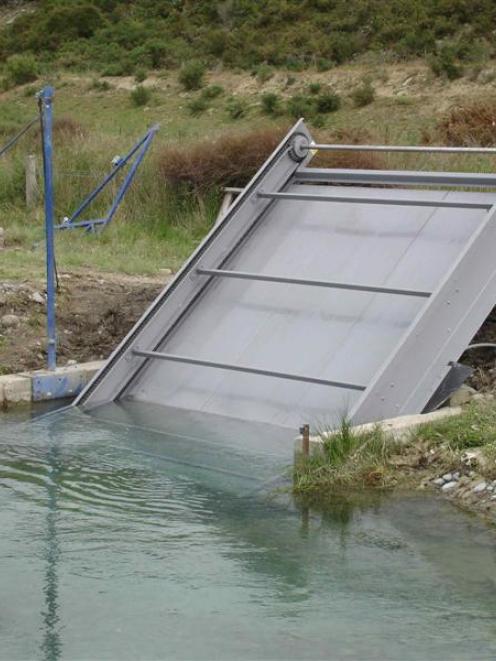
Aqwell Water Treatments has developed a screen which sits over the water intake and automatically removes didymo by a conveyor and brush system, run off a timer.
This prevents pumps and nozzles from becoming blocked.
When static screens were completely blocked, pressure from the pumps could force them to implode.
The company's manager, Matthew Savage, said in an interview that during the irrigation season, the Black Point intake on the Waitaki River had to be cleaned manually every four hours.
An Aqwell didymo screen has been installed and he said the intake should only need checking once a week and manually cleaned once a month.
Dr Savage said the screen could be set to clean itself continuously if the river was heavily infested or every 15 to 30 minutes if there was less infestation.
The didymo was scraped on to river bank and removed by the farmer.
In some irrigation systems, farmers would draw water from an irrigation race and store it in a pond.
Dr Savage said a static screen at the pond's irrigation outlet would filter the water but screen cleanings would be dumped back into the pond, filling it with didymo and other debris.
This screen system removed that debris.
The Aqwell didymo screen elements were sized to handle flows from 200 litres a second to 2000.
Such was the concern with didymo, a new mid-Canterbury irrigation scheme taking water from the Rakaia diversion race had installed the screen before irrigation started.
Dr Savage said screens had been installed on schemes from the Clutha River north to the Rakaia.
They range in cost from $25,000 to $50,000, depending on size.
Didymo was first detected in the South Island in 2004 and has spread to such an extent Biosecurity New Zealand has declared the South Island a controlled area.
Waterways remain open but people are obliged to prevent its spread.
